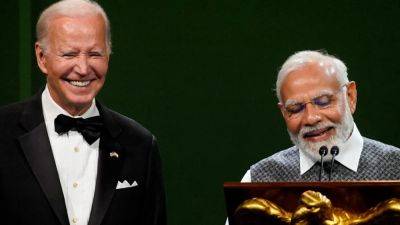How Modi Capitalized on India’s Economic Rise
Ten years after Narendra Modi was first elected prime minister, India’s economy is roughly twice as large. That is what happens when a country grows at 7 percent a year, as India has been doing, on average, since it opened its markets to international competition in 1991.
That steady growth has been skillfully repackaged to promote an image of one man’s leadership making it all happen. Along with nationalism and Hindu pride, the idea that Mr. Modi can make the economy move has been central to his appeal since the beginning.
And Mr. Modi has burnished India’s economy in ways that count the most with voters: He made visible infrastructure expansions and distributed welfare benefits to the majority of Indians, who remain poor by global standards even as the country’s higher-income groups learn to flex their spending power.
Most of the rest of the world — especially the United States and other Western countries that hope to persuade India to join them in constraining China’s and Russia’s strategic ambitions — wants India’s economy to accelerate.
Part of that story could be a shift in manufacturing, like the one Apple has underway in South India. And the world’s investment professionals are eager for India’s successes under Mr. Modi to start paying dividends that they can’t find elsewhere.
But even the most eager investors can’t overlook some of the problems that confront India as it becomes the world’s newest heavyweight. While Mr. Modi basked in the glow of a successful moon landing and the country’s innovative “digital public infrastructure,” the political opposition tried to speak past him to the frustrated masses who clamor for more and better jobs.
The opposition also tried rousing public anger over Mr. Modi’s ties with







